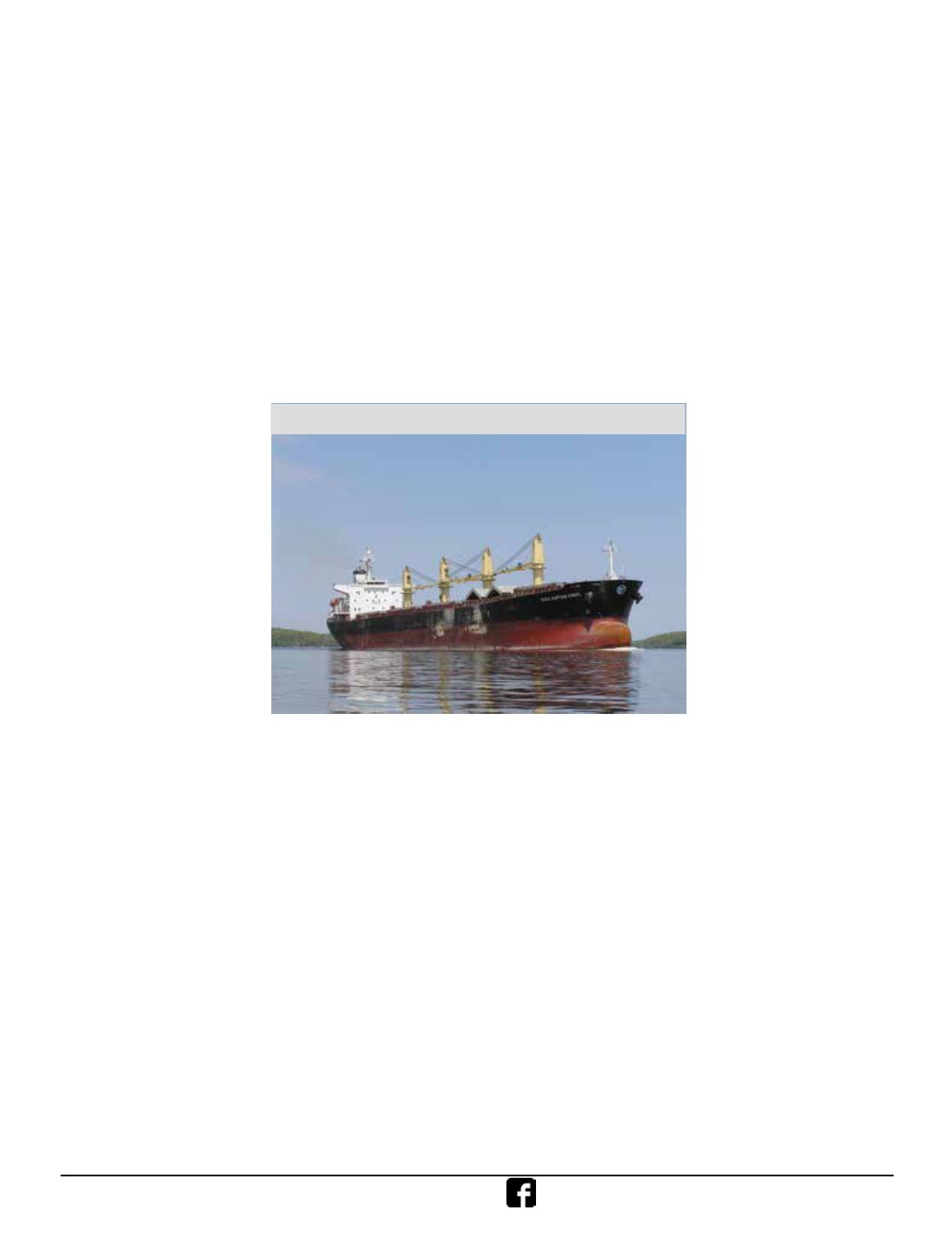

April 2017
56
Find Us On Facebook at Boating On The Hudson
Ambrose pilot station prior to entering New York Harbor.
Ships come up the river at all hours, day and night, all
throughout the year. These vessels travel to the Hudson River
from ports around the world. They come to the ports along
the river to load and discharge all sorts of cargoes. Grain,
road salt, scrap iron, cement, wood pulp, asphalt, generators
and steam turbines are some of the more common cargoes
carried by these ocean-going ships.
Each of these ships has a full crew and a captain, the vast
majority of these crews are foreign and the vast majority of
them have never been to the Hudson River. In New York
State, pilotage is required, the ship’s captain must give
full navigational control of his vessel to the Hudson River
Pilot, an individual that he has most likely never met. This
pilot will take the ship up to Hyde Park where the pilot will
either be relieved by a fellow Hudson River Pilot who will
continue upriver to a dock or the vessel will anchor at Hyde
Park Anchorage to await tide or berth availability. The tug &
barges we see transiting the Hudson River are U.S. flagged
and don’t normally require a
pilot.
To communicate with other
traffic and to give position
reports the pilot uses VHF
channel 13. Other pilots
and captains on tugboats
hear these “securite calls”
and make arrangements for
a safe location to meet or
overtake. This is important
because there are many
areas throughout the river
where large vessels avoid
meeting. In the upper end
of the Hudson River, above
Kingston, the navigation
channel is only 400’ wide.
While recreational vessels
do not need to be within
the confines of the channel,
ships and tugboats must remain in this channel or they
will go aground. Two 600’+ long ships that are each 106’
wide meeting in the 400’ channel create tremendous
hydrodynamic forces. These forces between the two vessels
and between each vessel and the sides of the navigation
channel have an enormous effect on the handling of the
vessels. A situation like this requires special ship-handling
skills that Hudson River pilotsmust master prior to becoming
licensed pilots. Before boarding the ship the pilot reviews
the tide and current predictions because much of the work
is tide dependent. The pilot will also check the weather
predictions and the Local Notice to Mariners in order to be
prepared for the transit. There are any number of pitfalls that
could potentially complicate the transit. Fog is especially
dangerous on the Hudson River. If the visibility is lost due
to fog or blinding snow the pilots anchor once they can get
the vessel to a suitable area. If the portion of the river they
happen to be in is too narrow to anchor or contains buried
cables or pipelines they must continue on until they reach a
safe anchoring location. The radar is quite important in this
situation. Once conditions improve they heave anchor and
continue. In different areas of the river the currents have
different effects on vessels. When the currents are strong
such as during the spring run-off and during the full or
new moon the forces on the vessel are greatly magnified.
This is further complicated by the fact that each ship has it’s
own “personality” and each ship acts differently in the way it
handles. The configuration of the propeller and rudder, the
hull form, draft and several other factors contribute to how a
ship handles. Some ships are better maintained than others
but regardless the Hudson River Pilot must be “on his toes”
at all times. Turning a large ship around at the port of Albany
in spring freshet conditions when the snow melt and spring
rains from the entire northern Hudson River watershed are
flowing through the narrow reaches of the Hudson River at
Albany highlight the shiphandling ability of the pilots.
A significant comment that Captain Joe Thomas made
the evening of our party was the fact that the Coast Guard
removes the regular navigation buoys from the shipping
channel in autumn and replaces them with “ice buoys.” The
ice buoys are used because they are designed to survive the
tremendous pressure and pounding that the Hudson River ice
has on them. They are shaped in such a manner from years of
Coast Guard experience to survive all winter. The ice buoys do
not all have navigation lights
on them, nor do they have
a good return on the ship’s
radar. In heavy ice they may
be trapped beneath the ice
or dragged off station.
Because
of
the
ice,
navigation on the Hudson
River changes dramatically.
For
instance,
shipping
north of Kingston at night is
generally not done during
the winter months. Also, the
colder it gets, the more ice
forms, and the demand for
heating oil that is tranported
on
the
Hudson
River
increases exponentially.
When the river is covered in
ice it is common for vessels to
get stuck in the ice. The daily
U.S. Coast Guard ice report and close communication with the
dedicated crews of the Coast Guard ice breakers are invaluable
during the winter months. When the ice is extremely heavy,
commercial vessels often travel in a convoy up from Kingston
and down from Albany. Normally the vessels will wait at
Kingston until daybreak to start up together in the morning.
Pilots can be on these vessels for days at a time during the
winter. Many of the captains and crews of these ships have
never seen ice covered waterways and are unfamiliar with ice
navigation and shiphandling in ice. Meeting other vessels in
heavy ice is a unique skill that the Hudson River Pilots must
learn during their training. When two vessels are meeting
in the ice, the weight of the ice surrounding the two vessels
pushes them together. The pilots must carefully plan this
maneuver with the opposing vessel since timing and location
of the maneuver are key.
The Hudson River Pilots’ mission is to safely get ships up
and down the Hudson River while acting in the interests of
New York State. The pilots, through their unique role are
above commercial pressures and use their ship handling
skills to protect the Hudson River and the environment.
According to my interviews with Hudson River Pilots, the
proposed anchorages are not intended as storage grounds
for oil barges. The idea of having anchorages available for
use in emergency “bailout” situations is not having them
Ship in channel at Malden, just north of Saugerties, NY.

















